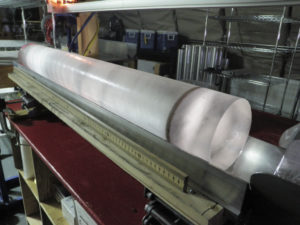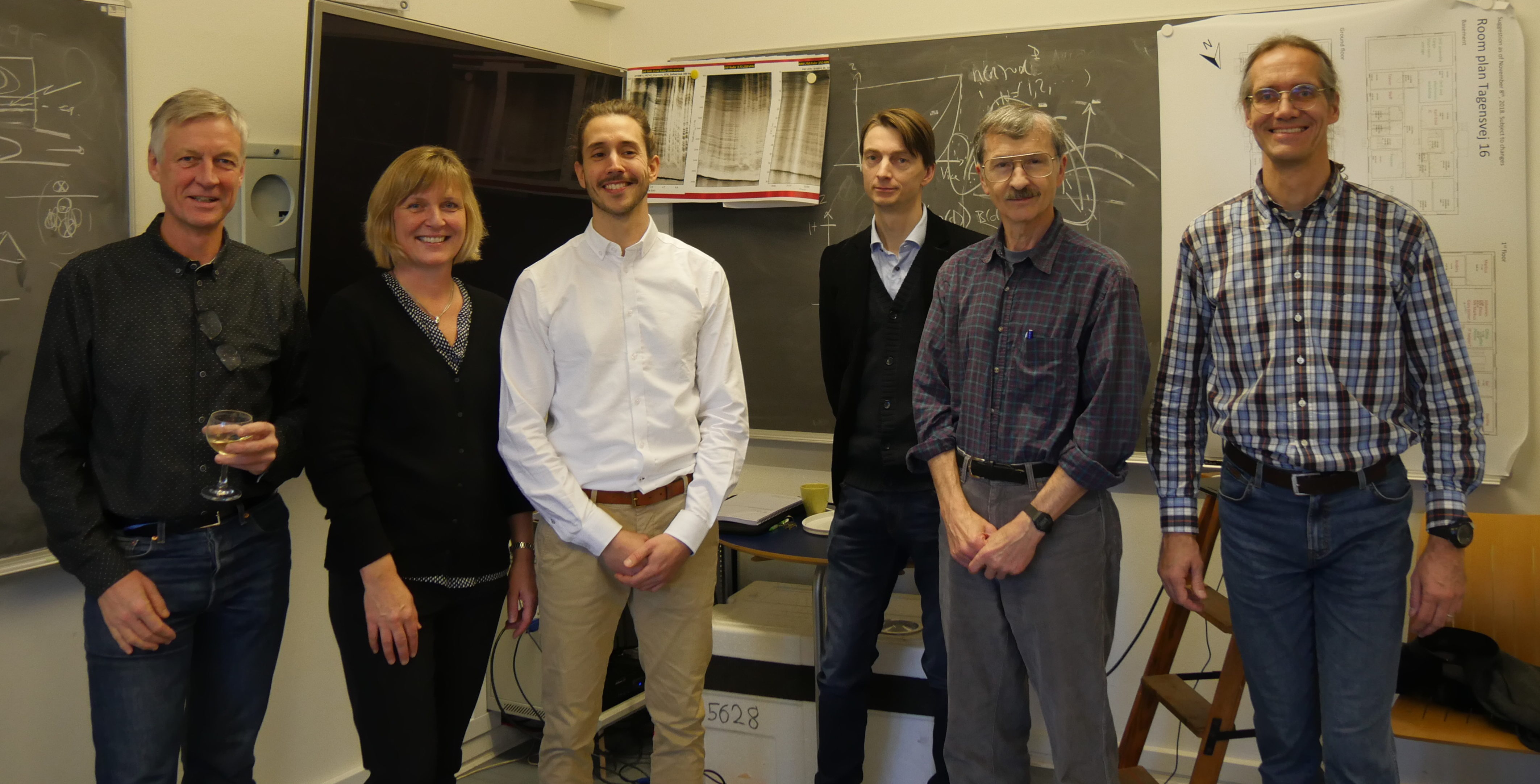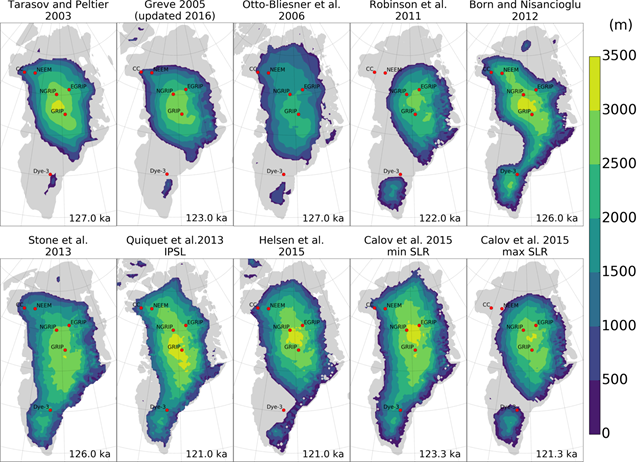The following ice2ice article was recently published: Sessford, E. G., et al. “High resolution benthic Mg/Ca temperature record of the intermediate water in the Denmark Strait across D‐O stadial‐interstadial cycles.” Paleoceanography and Paleoclimatology (2018). Below ice2ice Evangeline Sessford has written about the findings. This blogpost also appears on http://www.scisnack.com/
We set sail from Iceland on Research Vessel G.O. Sars, in July 2015, to extract sediment cores from the ocean floor in the Denmark Strait. The aim was to find sediment containing fossilized shells of zooplankton called foraminifera, to aid our understanding of what the past ocean was like. Over time, mud and foraminifera shells accumulate layer by layer, year after year building the ocean floor. These separate layers contain valuable information about how the ocean climate system changed over time in the past because the oldest layers are at the bottom. We cannot measure the past directly therefore we need proxies.
Proxies are substitute measurements that reflect ocean properties in the past. For example, to get a record of past ocean temperatures we measure the amounts of magnesium and calcium in foraminifera shells. These amounts depend on ocean water temperature. The higher the magnesium to calcium ratio; the higher the temperature. One of the cores, GS15-198-36CC -or Caprice, as I like to call her- was exceptionally full of our required proxy.
We measured the magnesium to calcium ratio in the shells of a type of foraminifera that lives on the ocean floor. Caprice was extracted from 770m below the surface so the measurements reflect intermediate depth water masses and how they changed over time.
Different water masses in the ocean have different characteristics. For example, the modern Gulf Stream flowing into the Nordic Seas at the surface in the east is warm and saline Atlantic Water. However, as it circulates in the Nordic Seas it loses heat to the atmosphere, cools and sinks and returns to the North Atlantic through the Denmark Strait in the west as intermediate water.
Some warm Atlantic Water makes it up to the Arctic Ocean. The Arctic Ocean is covered with sea ice and a cool, fresh layer of water. This water is lighter than the warmer Atlantic Water. Despite being warmer, the Atlantic Water is forced below the fresh layer because of its higher salt content and therefore density. This warm intermediate water then circulates in the Arctic Ocean while retaining most of its heat content and exits as intermediate water with a similar temperature as it entered.
The measurements from Caprice indicate that both these processes happened at our core location in the Denmark Strait during the last ice age, 30-40 thousand years ago. Basically, our core indicates that the Nordic Seas were sometimes covered by sea-ice and were sometimes open.
Results from Caprice record an intermediate water mass in the Denmark Strait that alternated between periods of cold (-1 to 1 °C), fluctuating and warm (1 to 3 °C), stable temperatures. These large shifts in the intermediate water temperature record are coherent with substantial, well-known climate fluctuations, Dansgaard-Oeschger events. These events are clearly visible in Greenland ice core records that show air temperatures rapidly warming by up to 15 °C in less than 30 years. The abrupt warmings and following warm periods are known as Greenland Interstadials. They were followed by drops back into cold periods known as Greenland Stadials. Research suggests that these shifts between interstadials and stadials are governed by a fluctuating sea ice cover retreating and then expanding over most of the Nordic Seas.
Our magnesium-calcium proxy measurements support this timeline of events. When the intermediate water was warm and stable -similar to the modern-day Arctic Ocean- there was sea ice cover over the Nordic Seas and it was a Greenland Stadial. When the intermediate water was cold and fluctuating -similar to modern Nordic Seas- there was no sea ice cover over the Nordic Seas, and it was a Greenland Interstadial.
Our measurements of intermediate water from Caprice help us understand what happened with sea ice at the surface of the Nordic Seas thousands of years ago. But we are still left wondering how the ocean actually circulated during these events. The stories from cores like Caprice become truly spellbinding when you combine them with other scientific methods, like modelling. Only then can we get a complete picture of how the oceans behaved. We need to extend the study area from where we were on board G.O. Sars to the inflow region in the eastern Nordic Seas. We will incorporate a model to test if the ocean was physically capable of these proposed fluctuations.
References:
- Dansgaard, W., et al. (1993), Evidence for general instability of past climate from a 250-kyr ice-core record, Nature, 364, 218-220.
- Rahmstorf, S. (2002), Ocean circulation and climate during the past 120,000 years, Nature, 419, 207-214.
- Rosenthal, Y., and B. K. Linsley (2007), Mg/Ca and Sr/Ca paleothermometry, in Paleoceanography, Physcial and Chemical Proxies, pp. 1723-1731.
- Rudels, B., G. Björk, J. Nilsson, P. Winsor, I. Lake, and C. Nohr (2005), The interaction between waters from the Arctic Ocean and the Nordic Seas north of Fram Strait and along the East Greenland Current: results from the Arctic Ocean-02 Oden expedition, Journal of Marine Systems, 55(1–2), 1-30.
- Voelker, A. (2002), Global distribution of centennial-scale records for Marine Isotope Stag (MIS) 3: a database, Quaternary Science Reviews, 21, 1185-1212.
Check out the links below if you’re craving to learn more about the ocean:
Movies:
More about proxies – https://vimeo.com/154733972
More about Dansgaard-Oeschger events – https://vimeo.com/156830900
For kids and teaching:
https://climatekids.nasa.gov/ocean/
https://iglo.w.uib.no/










